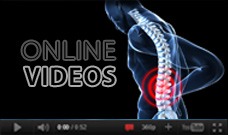Anterior Cervical Discectomy
The vertebrae of the cervical spine or neck region are separated by soft, rubbery intervertebral discs which provide flexibility to the neck, aid in movement and also act as shock absorbers. These discs comprise of an inflexible ring called the annulus fibrosis which encloses a gelatinous inner substance called the nucleus pulposus. Advancing age and overuse results in degenerative changes of these discs. The soft gelatinous material, from the damaged discs, may herniate through the outer fibrous ring and compress the nearby spinal cord and/or spinal nerves resulting in neck and arm pain. It may also lead to weakness in the arms. Compression of the spinal cord can lead to pain and weakness even in the legs. In rare cases it may also cause partial paralysis of the arms.
Anterior Cervical Discectomy (ACD) is a surgical procedure for the removal of the herniated or degenerated disc through an incision on the front (anterior) of the neck. ACD is indicated in patients with herniated disc or degenerative disc disease having persistent symptoms or those with excessive arm and neck pain, even after a few months of non-surgical treatment. ACD also prevents paralysis of arms in patients with spinal cord compression.
Procedure
Before the procedure, the patient is sedated and administered anesthesia. The patient is placed on the operation table on their back. The cervical spine is approached through an incision on the front of the neck. The neck muscles, trachea and the esophagus are retracted to access the cervical spine. The affected disc is identified, with the help of intra-operative fluoroscopy, and removed. Bone spurs or outgrowths compressing the nerves are also removed. The empty space created in between the vertebrae, after the discectomy, is filled with a bone graft. Depending of the source, the bone grafts can be categorized into autografts and allografts. Autografts are derived from the iliac bone of the patient, during the ACD surgery, whereas an allograft can be obtained from a bone bank. Nowadays bone graft substitutes called cages, made from synthetic materials, are also available. The adjoining vertebrae are now joined with the help of a small metal plate and screws (instrumentation), to reinforce the graft. The proper placement of the graft and the spinal instrumentation are confirmed through fluoroscopy. The incision is then sutured.
Patients are usually discharged a day after the surgery. The bone graft gradually joins the two adjoining vertebrae into a single solid bone, through the natural healing process.
Risk and Complications
Every surgery has some risk associated with it. Although ACD is a safe procedure, some of the risks that can occur include infection, bleeding and nerve injury. Nerve injury in some patients may lead to hoarseness of voice and difficulty in swallowing, but it usually resolves within a few weeks. Rarely, a spinal cord injury may also occur. This is a serious complication and can lead to paralysis and even death.
Most patients have a successful outcome after ACD. It is effective in relieving arm pain, however, arm weakness and numbness may take some time to resolve following the surgery.
|











